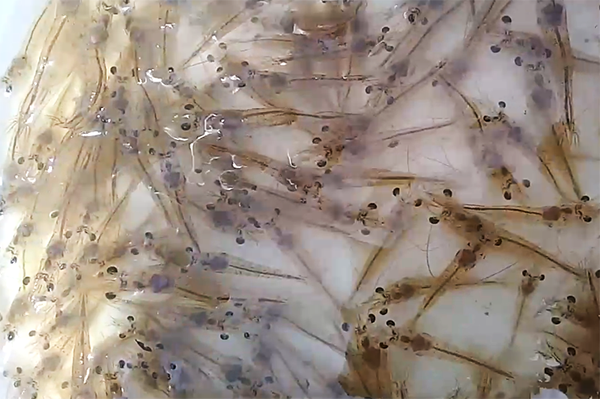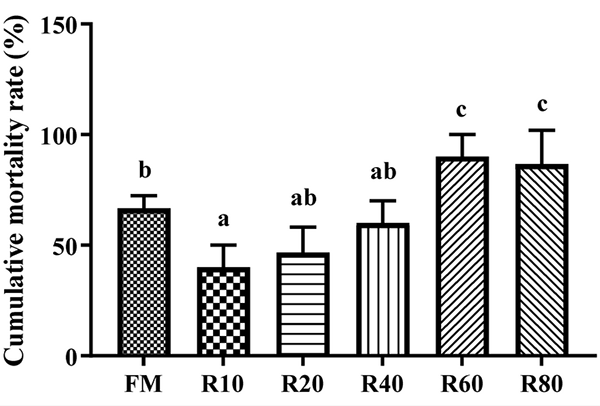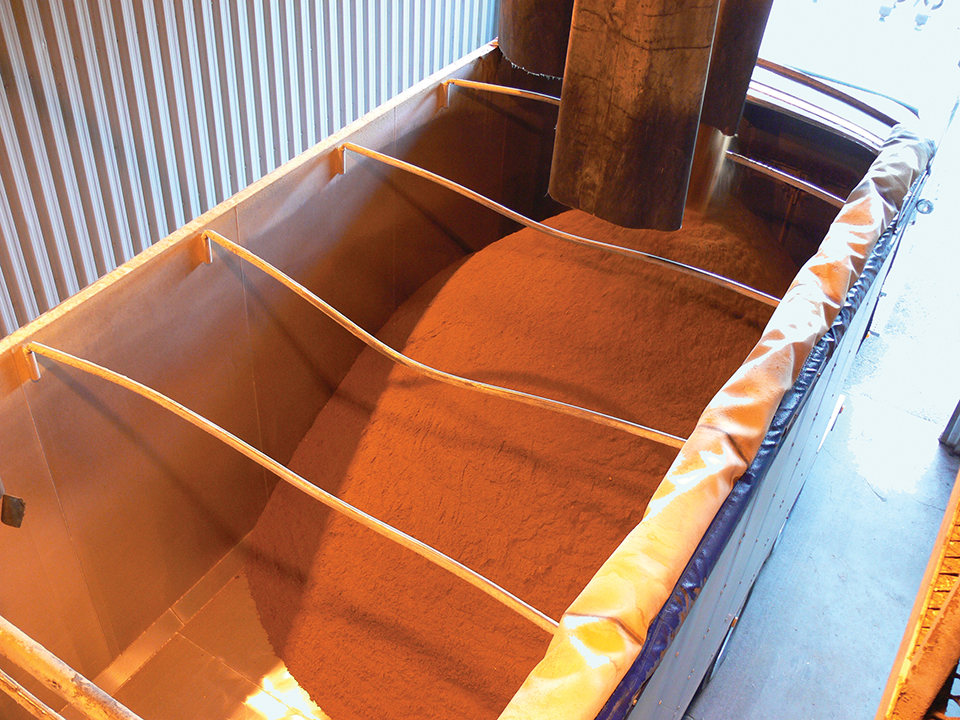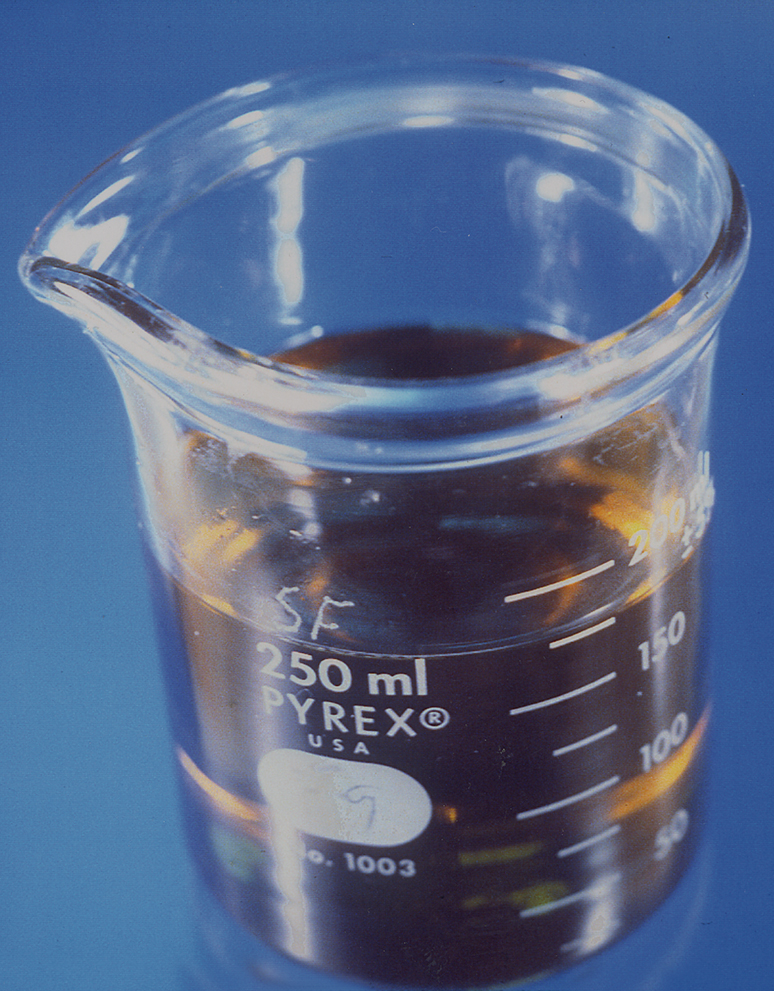Rice protein meal can replace 10 percent of the fishmeal in diets without adverse effects on growth

Rice protein meal (RPM), a high-quality edible protein with high bioavailability, is a low-antigenic protein that does not cause allergic reactions. RPM is extracted by separation from processing byproducts such as broken rice, rice germ, rice bran and rice husk. Its crude protein content is generally 60 to 68 percent, and its digestible protein content is 56 percent or more, making it more bio-effective and easier to absorb and utilize than maize, wheat and other proteins. In addition, rice protein hydrolysates contain a variety of physiologically active small molecule peptides with antioxidant and immunomodulatory activities. RPM is widely sourced, productive and rich in nutrients.
Some studies have reported replacing fishmeal with RPM in diets for Pacific white shrimp (Litopenaeus vannamei) to evaluate the utilization and nutrient digestibility of RPM by shrimp and reported that fishmeal could be replaced with RPM in shrimp feed. However, high levels of vegetable protein can reportedly be harmful to shrimp health and affect the composition of shrimp gut bacteria.
Under normal conditions, the dominant flora colonizing the gut acts as a stable ecological community that repels foreign bacteria and serves as an important biological barrier for the immunity of the shrimp gut. The effect of RPM on the intestinal flora and immunity of shrimp has not been studied.
This article – summarized from the original publication (Lin, H. et al. 2022. Effect of Rice Protein Meal Replacement of Fish Meal on Growth, Anti-Oxidation Capacity, and Non-Specific Immunity for Juvenile Shrimp Litopenaeus vannamei. Animals 2022, 12(24), 3579) – reports on a study that evaluated the effects of RPM on growth, non-specific immunity and intestinal flora for Pacific white shrimp (Litopenaeus vannamei).
Study setup
This study assessed the effect of rice protein meal replacement for fishmeal on the growth, non-specific immunity and disease resistance on juvenile L. vannamei. It was carried out at the High Technology Park of Guangdong Ocean University, China. Juvenile L. vannamei were sourced from the South Marine Aquaculture Seed Base of Zhanjiang Hengxing South Marine Technology Ltd. Co., China.
A total of 720 animals (0.54 ± 0.01 grams) were randomly assigned to six groups and separated into fiberglass, 0.3-cubic-meter tanks. Six groups of iso-nitrogenous and iso-lipid feeds named FM, R10, R20, R40, R60 and R80 were prepared by replacing 0, 10, 20, 40, 60 and 80 percent in fishmeal protein with RPM, respectively, and then fed to the shrimp. Each group was fed four times a day to satiety for eight weeks. The amount of feed consumed, water temperature (28–31 degrees-C), and salinity (25–30 ppt) were recorded daily. Samples were collected for whole-body composition, blood and hepatopancreas analyses.
For detailed information on the experimental design, animal husbandry and diet preparation; collection of samples; chemical, intestinal microbiota, PCR and statistical analyses; and the Vibrio parahaemolyticus challenge test, refer to the original publication.
Results and discussion
RPM is a high-energy, high-protein feed material with high amino acid content and good palatability. We found no significant differences in weight gain (WG) and feed conversion ratio (FCR) between the R10 and FM groups. In the R20, R40, R60 and R80 groups, both WG and specific growth rate (SGR) were significantly lower than in the FM group. As for the effects of RPM on body composition, the crude protein (CP) level was significantly lower in the R40, R60, and R80 groups than in the FM group. The moisture (MS) level was significantly higher in the R40 groups than in the FM group, and we observed no significant differences in crude lipid (CL) and crude ash (CA) between treatments.
Digestive enzyme activities reflect the most basic physiological characteristics of an animal’s digestion and its ability to utilize feed nutrients. We observed that replacing small amounts (10 percent) of fishmeal with RPM increased the activity of various digestive enzymes in L. vannamei activities. Previous research showed that the enzymatic digestion of rice protein produces a flavor peptide that effectively enhances the viscosity and palatability of the feed. Thus, replacing small amounts of fishmeal with RPM could improve digestive enzyme activities, ensuring that the shrimp could effectively absorb and digest the nutrients.
Rice protein has endogenous antioxidant effects and could effectively reduce oxidative stress damage to the body. Our results showed that the replacement of small amounts (10 and 20 percent) of fishmeal with RPM significantly increased the activities of several important enzymes. We speculate that the processing of rice proteins can influence their physicochemical and structural properties, as well as their structure, solubility and hydrolytic capacity. And that the replacement of a small amount of fishmeal with RPM significantly increased the antioxidant capacity of the shrimp.
The intestinal bacterial flora, an important micro-ecosystem, relates to digestion, absorption and immune function. Under normal conditions, a balance between the various bacteria in the gut occurs dynamically to maintain the stability of the intestinal environment, thus contributing to the effective suppression of invasion by exogenous pathogenic bacteria and the enhancement of nonspecific immunity. Richness and diversity indices are important indicators of microbial diversity and complexity, and differences in their values reflect variations in community structure and numbers of species. Our data indicate that the replacement of a small amount of fishmeal with RPM in the diet increased the species richness of the shrimp gut microbiota without altering its diversity.

At the phylum level, the main bacterial groups in the gut of shrimp were the phyla Bacteroidetes and Proteobacteria with abundances greater than 80 percent. Bacteroidetes help the host to digest proteins, carbohydrates (especially polysaccharides), and other substances to increase the availability of nutrients; these bacteria are also involved in the metabolism and transport of sugars, provide energy for the host and thus promote its growth. Proteobacteria are highly correlated with sample spoilage, and their relative proportion in the gut of diseased animals is significantly elevated.
In our study, the replacement of a small amount (10–40 percent) of fishmeal with RPM significantly increased Bacteroidetes abundance but reduced that of Proteobacteria. At the genus level, Vibrio abundance decreased significantly and then increased with increasing RPM replacement amount. Vibrio is the dominant genus in the sea and one of the main pathogenic bacteria for mariculture animals. Therefore, the replacement of small amounts (10–40 percent) of fishmeal with RPM could improve the microbiological composition of the shrimp gut.
The hepatopancreas is the main immune organ of the shrimp, and innate immunity is an important defense for invertebrates against disease-causing agents. Several immune factors play a vital immunity function and are closely linked to the strength of resistance against infection in L. vannamei. Our challenge experiment with V. parahaemolyticus showed the lowest cumulative mortality in the 10 percent substitution group. Meanwhile, a 60 percent substitution rate resulted in a significant increase in cumulative mortality in shrimp. Therefore, replacing fishmeal with moderate amounts of RPM could significantly improve the immune regulation and resistance to diseases of shrimp.
Perspectives
Our results showed that rice protein meal (RPM) can be reasonably used to replace a small amount of fishmeal in shrimp feed. No significant effect on shrimp growth was found with partial RPM replacement of fishmeal (10 percent), but digestibility, protein synthesis, antioxidant capacity, non-specific immunity and disease resistance were significantly improved. And the replacement of 10–40 percent of fishmeal with RPM improved the intestinal flora structure of the shrimp.
Now that you've reached the end of the article ...
… please consider supporting GSA’s mission to advance responsible seafood practices through education, advocacy and third-party assurances. The Advocate aims to document the evolution of responsible seafood practices and share the expansive knowledge of our vast network of contributors.
By becoming a Global Seafood Alliance member, you’re ensuring that all of the pre-competitive work we do through member benefits, resources and events can continue. Individual membership costs just $50 a year.
Not a GSA member? Join us.
Author
-
Dr. Qihui Yang
Corresponding author
College of Fisheries, Guangdong Ocean University, Zhanjiang 524088, China
Related Posts

Aquafeeds
Animal protein meals reduce feed costs but don’t improve shrimp performance
The authors conducted a study to determine how replacement of salmon meal with various animal protein meals in feed affected the growth performance of white shrimp.

Innovation & Investment
Aquafeed opportunity attracts pioneers from fields afar
As business leaders switch focus from biofuels and energy to food security, one convert dubs the aquafeed opportunity a needed “redeployment” of knowledge.

Health & Welfare
Fishmeal replacements: Rendered protein meals effective
Research indicates that rendered protein meals could replace significant amounts of fishmeal in diets for shrimp and several cultured fish species without reducing weight gain.

Aquafeeds
Understanding oxidation: managing ingredient, food quality
Antioxidants can be effective at controlling lipid oxidation in animal feeds and ingredients and should be added early in processing to limit free radicals.



